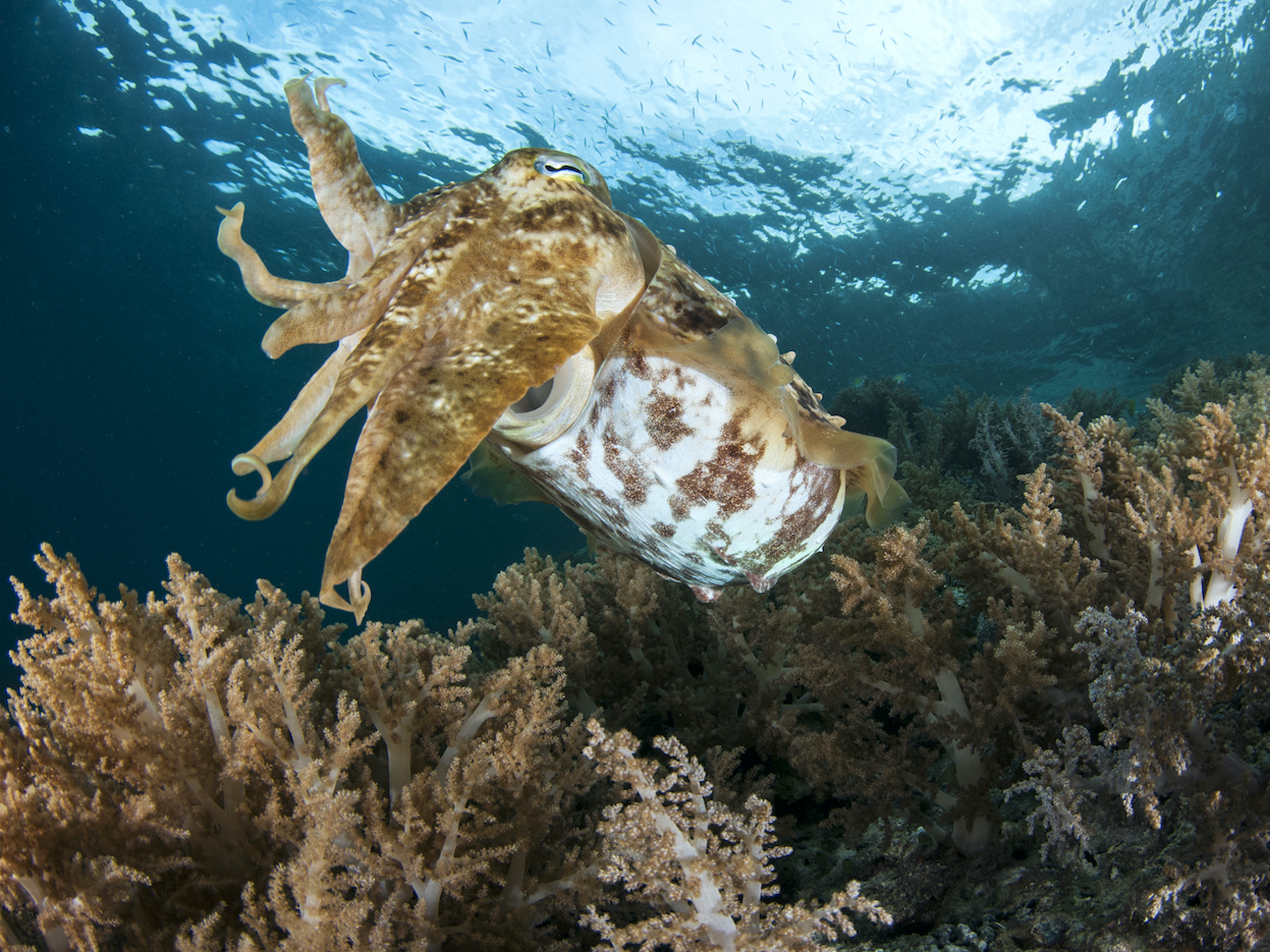 Listen to this article
•
15:34 min
Listen to this article
•
15:34 min
During a project back in college that required us to survey people’s seafood preferences along India’s coastline, I learnt about the seafood industry, popular species, and the diversity of preparations. One animal that often came up in our surveys was squid. Sometimes as “skyuds”, at other times as “calamari”. Squid fishing was seeing an unprecedented boom with an increase in demand from the export industry and local Indian markets.
This was a fascinating first step towards understanding the marine world, looking at the economic and cultural value placed on wild marine life, like the delicious squids. It would be a couple of years until I began diving and seeing marine life alive. A step that permanently changed my view of these species from being ecologically and commercially important animals to creatures that led interesting lives.
I often describe marine animals as incredible, beautiful, or even bizarre. For a long time, however, squids have remained mysterious. Having seen dead squids at harbours, markets and on plates, I half-expected that seeing them in the wild would be easy.
Through trial and error I realised that squids are ever-alert, intelligent and extremely fast animals. They are present one moment, hovering like translucent ghosts in front of you. And in the time it takes to see if anyone else saw it too (a frustrating human tendency), the animal is gone, leaving you to wonder if it was a figment of your imagination.

Mollusc adaptation
Squids came into existence approximately 150 million years ago during the Jurassic Period when dinosaurs were in their prime. Like their close relatives the octopus and cuttlefish, squids evolved from shelled molluscs. With the muscular foot turned into eight arms (and two tentacles) and a shell so reduced that it looks like a Roman gladius supporting its soft mantle, squids have retained some ancestral molluscan traits, and developed some bizarre adaptations of their own. To cope with the dangers of having no shell, they evolved complex sensory systems for protection and cleverly finding food. Today, squids are stealthy, strong, and smart predators of shallow and deep seas.
A dead squid in a fish market can appear quite uninteresting to look at — pale and slippery. This is an interesting contrast to their nature underwater, where their gazing large eyes, and rhythmically undulating fins have something of a hypnotic effect. Their ability to suddenly vanish is made possible by their use of jet propulsion powered by hydraulics. Water expelled out of the mantle cavity sends the squid bolting in the direction of its head, allowing it to cover large distances or flee from a scene in seconds! Combine this with good vision, an incredible ability to camouflage, a sac of ink, and squids are tricky prey to catch.
Lights, chemicals, action!
Squids use rapid and adaptive camouflage to hide. This requires them to constantly monitor their environment, using vision and pressure changes in the water through sensitive hair cells (similar to lateral lines of fish). While taking stock of potential predators and prey, they observe the colours and shadows of objects around them and the direction of sunlight. They relay this information to the brain which then neurally controls their camouflage. When plain squid makes its presence on a human menu there is no trace of this brilliant optical malleability.
Squid skin contains pigmented “chromatophores” that expand and contract, and another layer of “iridophores” that act as light reflectors. This allows them to camouflage near the ocean floor, floating objects, and in the water column. Squids occurring in the featureless midwater may also have “photophores” that produce bioluminescence so their bellies blend in with light coming from the surface. This “counterillumination” helps squids hide from animals patrolling the water looking upwards.
Shy squid, bold squid, helpful squid
While other cephalopods typically go through most of their life alone, squids are quite social. Caribbean reef squids use a combination of complex postures and tentacle positions (extended, devilish, bad hair, curled, to name a few) to communicate with potential mates, competitors, and to fool predators. Laboratory studies of dumpling squids have found distinctive shy and bold personalities among individuals. Some jet-propel themselves out of a scene at first sight of a predator while others stand their guard aggressively.
Many species get together to form “squads” of squids that hunt and stick together to increase chances of survival. When injured, longfin inshore squids will actively seek out a school to stay protected. Humboldt squids form schooling vortices to cooperatively hunt together and track down fish at night.
Ecologically, squids are a crucial link in the ocean food web as predators but also as prey for marine mammals, seabirds, turtles, and a host of fish. Yet their lives remain mysteries still to be solved. Today advances in science and technology are allowing us to understand their cognition and camouflage at the cellular level, and how and why they form social groups deep in the ocean. We may be well acquainted with their flavours and textures, but to get wild squids to let you in on their secrets, we must start by patiently earning their trust when we observe them.








